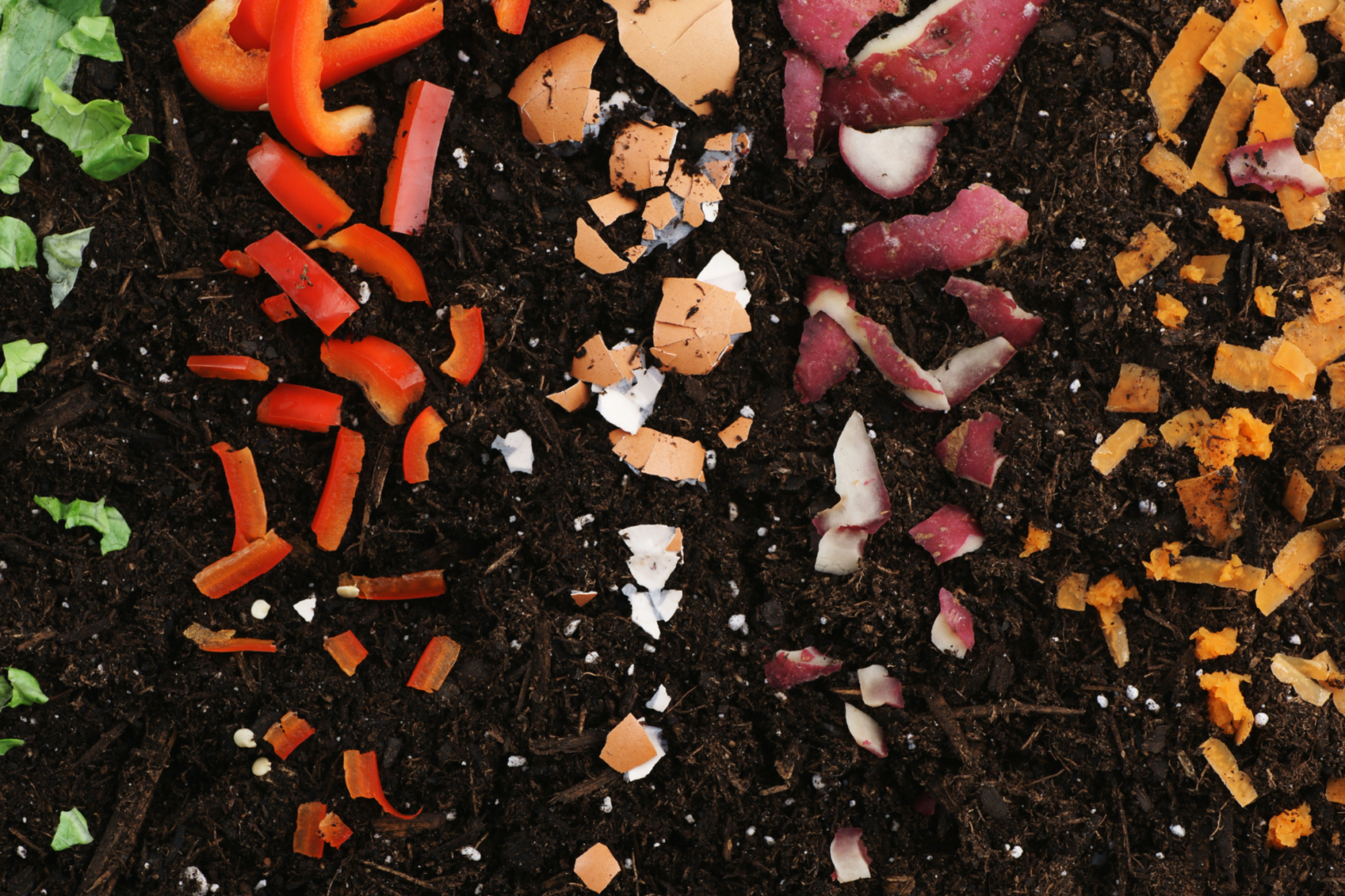Our current practice of mindlessly disposing of kitchen waste and backyard debris in landfills has far-reaching environmental consequences.
One of the most alarming byproducts of this habit is the production of methane. This super-pollutant is up to 80 times more toxic than carbon dioxide and significantly contributes to climate change. Due to the sheer volume of organic material dumped into landfills daily, methane is rapidly dispersed into the atmosphere, exacerbating global heating. The urgency to reduce methane emissions, as emphasized by the UN, must be addressed to combat the pressing issue of climate change.
Dumping organic waste, including food scraps and backyard detritus, directly into landfills perpetuates harmful methane gas release and squanders valuable resources.
Food waste accounts for almost a quarter of landfill material in the United States alone.
However, we can make a substantial impact by diverting this organic waste from landfills and adopting composting practices.
Composting offers a simple and effective solution that not only curbs methane emissions but also nurtures the soil food web, creating a virtuous cycle of sustainability.
By composting, we divert these valuable resources from landfills and channel them into a process that enriches the soil, promotes plant growth, and fosters a more vibrant ecosystem. Moreover, composting is crucial in minimizing the release of nitrous oxide, another potent greenhouse gas.
By recognizing the detrimental effects of trashing organic waste and embracing the practice of composting, we take significant steps toward a more sustainable future.
It’s time to break the cycle of waste and embrace composting as a vital strategy for creating a greener, more harmonious relationship with our planet.
Landfills and the Need for Composting
Air pollution, contaminated groundwater, detrimental health effects, unworkable soil and land, high economic costs, fires, and pests like flies and rats are only a few drawbacks of landfills – so why do we keep feeding them?
Landfills are often tightly packed to accommodate as much municipal garbage as possible. This means that when organic materials are sent to the dump, they get crushed under heaping piles of trash. Compacting trash removes oxygen, a vital component of organic decomposition.
When organic materials break down without the presence of oxygen, methane is created as a byproduct, a harmful greenhouse gas, and a major driver of climate change.
How Composting Reduces Methane Emissions
Composting provides organic matter access to oxygen and water, allowing for proper decomposition and biodegradation. When organic waste decomposes aerobically, it produces nutrient-rich compost that resembles soil. By composting, we divert organic waste from landfills, preventing methane emissions and promoting a more sustainable approach to waste management.
Why Compost?
Composting reduces waste sent to landfills, cuts methane emissions, and enriches soil with valuable nutrients. Using compost in gardens and lawns reduces the need for pesticides, minimizes stormwater runoff, and fosters healthier plant growth.
Composting Options for Everyone
Composting can be practiced regardless of where you live. There are various methods available depending on your lifestyle and residence.
- Composting Indoors: Indoor composting options include countertop food digesters that turn food scraps into compost in hours and vermicomposting using worm bins.
- Composting on a Patio or Balcony: Options for composting in limited spaces include compost tumblers that facilitate easy turning and standing compost bins designed to be space-efficient.
- Backyard Composting: Backyard composting methods include traditional compost piles, trench composting, compost tumblers, standing compost bins, and vermicomposting.
Composting Basics
Composting is the process of breaking down organic materials into nutrient-rich soil-like matter (known as compost.) It’s a natural and sustainable way to recycle and repurpose organic waste, such as food scraps, yard trimmings, and other biodegradable materials.
Composting creates an ideal environment for microorganisms, including bacteria, fungi, and worms, to decompose the organic matter. These microorganisms break down the materials into simpler compounds, releasing heat and producing carbon dioxide, water, and humus-rich compost. Composting offers numerous benefits, including reducing the amount of waste sent to landfills, minimizing greenhouse gas emissions, improving soil fertility, retaining moisture, and promoting healthier plant growth.
To create a successful compost, it’s essential to balance the carbon-rich “browns” (like dry leaves or shredded paper) with the nitrogen-rich “greens” (such as food scraps or grass clippings), maintain proper moisture levels, and provide adequate aeration. With a little effort and patience, anyone can embrace composting as an eco-friendly practice that contributes to a greener and more sustainable world.
Compost-Friendly Items
- Fruit and vegetable scraps
- Coffee grounds and filters
- Tea leaves and tea bags (check for compostable bags)
- Eggshells
- Yard trimmings (grass clippings, leaves, branches)
- Nutshells
- Dry leaves and twigs
- Shredded paper and cardboard (non-glossy)
- Wood chips and sawdust (untreated)
- Fabric made from 100% cotton, linen, hemp, silk, bamboo, wool, or other natural biodegradable material
- Plant-based food scraps (rice, pasta, bread, etc.)*
*Starchy food items like bread and pasta will compost better when broken into smaller pieces and when added in limited quantities.
Don’t Compost These Things
- Meat, fish, and bones (they can attract pests)
- Dairy products (milk, cheese, yogurt)
- Oils, fats, and greasy foods
- Pet waste (feces, litter)
- Diseased plants or weeds with seeds
- Synthetic materials (plastics, metals, glass, polyester, nylon)
- Coal or charcoal ash
- Invasive plants (to prevent spreading)*
- Glossy or colored paper
- Treated wood (pressure-treated or painted)
*Rather than compost, invasive plants can be turned into fertilizer tea.
Real-World Examples of Successful Composting Programs in the U.S. and Caribbean
Seattle’s Composting Program
In Seattle, Washington, the pioneering composting program, launched in 2009, has achieved remarkable success in diverting food waste and food-soiled materials away from landfills. Through this visionary initiative, Seattle now sends over 125,000 tons of food and yard waste per year to composting processors. This compost is used in local parks and gardens, enriching the soil, reducing pesticide use, and nurturing the city’s green spaces.
San Francisco’s Zero Waste Initiative
San Francisco implemented the first and largest urban food scraps composting collection program in the US. By strictly enforcing recycling and composting separation, the city has successfully diverted millions of tons of waste, producing compost that benefits local orchards, vineyards, and farmers.
Mandatory Composting in New York City
The Big Apple is gearing up for a composting revolution! New York City residents generate a staggering 8 million pounds of organic waste daily. To tackle this issue head-on, starting in April 2025, all NYC residents are required to compost their food scraps, yard waste, and food-soiled paper. The city aims to divert all organic waste and recyclable materials from landfills by 2030. Mandatory composting and curbside pickup will be instrumental in achieving this ambitious goal.
Composting Initiatives in the Caribbean
Saint Lucia
In Saint Lucia, a pilot program for reducing organic waste in landfills focuses on diverting green waste, reducing landfill fires, improving waste compaction, and producing compost and mulch for local use. These initiatives aim to enhance land resilience and soil fertility and reduce dependence on imported products.
Exuma, The Bahamas
Over the past decade, Recycle Exuma, an organization dedicated to sustainable waste management, has actively worked to divert organic waste from landfills. They undertook a comprehensive multi-year study and initiated a pilot project for Food Waste Composting at the renowned Sandals Emerald Bay resort in Exuma. The study revealed a significant breakthrough, highlighting that nearly 50% of the resort’s waste is compostable.
Embrace the Power of Composting!
Composting presents a straightforward yet impactful solution to take charge of our waste and pave the way for a greener future. Whether at home, within our communities, or on a larger scale, composting empowers us to make a substantial difference by curbing methane emissions, enriching soil health, and promoting sustainability. Through our collective commitment to composting, we can convert organic waste into a precious resource and cultivate a harmonious bond with our environment. Join the composting movement today and play a vital role in driving the positive change our planet urgently needs!
Easy DIY 5-Gallon Compost Bin
Creating a budget-friendly compost bin using a 5-gallon bucket is a practical and sustainable solution. Here’s a step-by-step guide to help you make your own compost bin:
Materials Needed:
- 5-gallon bucket with a tight-fitting lid
- Drill with a ¼ inch drill bit or a hot nail
- Newspaper or cardboard
- Compostable materials (kitchen scraps, yard waste, etc.)
Step 1: Prepare the bucket
- Clean the 5-gallon bucket thoroughly to remove any residue or contaminants.
- Ensure that the bucket has a tight-fitting lid to prevent pests and keep the compost contained.
Step 2: Create air holes
- Using a drill with a ¼ inch drill bit or a hot nail, make several holes around the sides and bottom of the bucket.
- These holes will provide the necessary airflow for the composting process.
Step 3: Add a drainage layer
- Place a layer of newspaper or cardboard at the bottom of the bucket.
- This layer will help with drainage and prevent the compost from becoming overly soggy.
Step 4: Start composting
- Begin adding compostable materials to the bucket.
- Include a mix of brown materials (carbon-rich) like dry leaves or shredded paper and green materials (nitrogen-rich) such as kitchen scraps or grass clippings.
- Aim for a balance of approximately 3 parts brown materials to 1 part green materials.
Step 5: Maintain the compost bin
- Keep the compost bin properly aerated by occasionally stirring or mixing the contents with a stick or shovel.
- If the compost becomes too dry, add a small amount of water to moisten it. If it becomes too wet, add more dry brown materials to absorb the excess moisture.
- Remember to keep the lid tightly sealed to prevent odor and unwanted pests.
Step 6: Allow time for composting
- Be patient! Composting is a rewarding practice that takes time. Depending on the materials and conditions, it can take several weeks to several months for the compost to fully decompose.
- Regularly check the moisture level and adjust as needed.
- Monitor the progress and turn the compost occasionally to speed up the decomposition process.
With this simple DIY compost bin, you can efficiently recycle kitchen and yard waste, turning it into nutrient-rich compost for your garden or plants.

